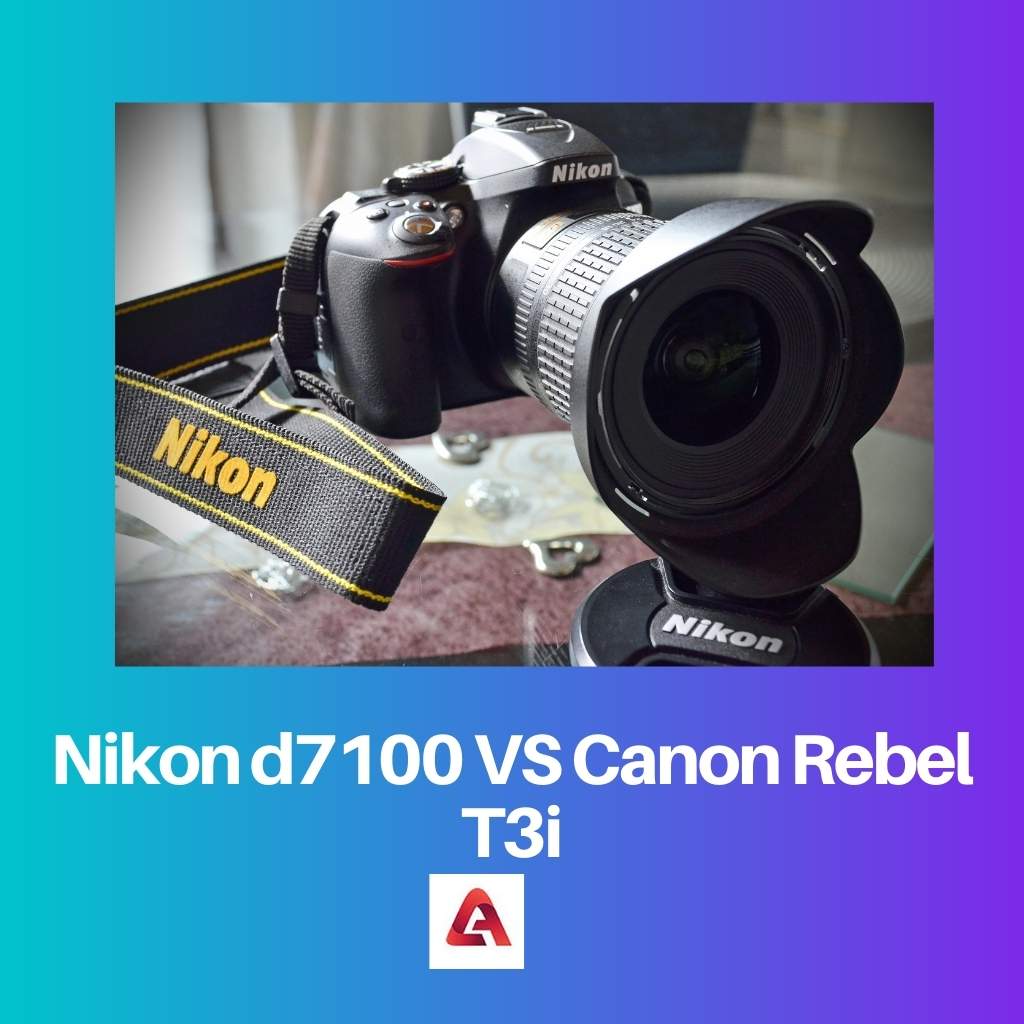In comparison to the T3i, the D7100 has a built-in focus motor and a larger dynamic range. It can also shoot high-resolution photos at a quicker rate.
Key Takeaways
- The Nikon D7100 offers a higher resolution with 24.1MP compared to the Canon Rebel T3i’s 18MP, resulting in more detailed images.
- The Canon Rebel T3i features an articulated screen, providing more flexibility in shooting angles, while the Nikon D7100 has a fixed screen.
- Nikon D7100 has better weather sealing, making it more suitable for outdoor photography in various conditions, unlike the Canon Rebel T3i.
Nikon d7100 VS Canon Rebel T3i
The Nikon D7100 is an HD SLR that offers superior ISO performance of 100-6400. It has a quick shutter speed that can shoot 6 pictures in one second. Canon Rebel t3i is a high-resolution DSLR with an ISO range of 100-12800. It can capture 7 frames in one second.

For high-resolution DX-format cameras, the D7100 represents a significant step forward in image quality. Nikon‘s 24.1 MP CMOS sensor of DX-format was explicitly made without an optical low pass filter also known as OLPF.
The Crop factor of Canon Rebel t3i is 80 mm. It has an ISO range of about 100-12800. It is the new flagship of the EOS Rebel series.
Comparison Table
| Parameters of Comparison | Nikon d7100 | Canon Rebel T3i |
|---|---|---|
| Crop factor | The crop factor of the Nikon D7100 is 75 mm | The Crop factor of Canon rebel t3i is 80 mm |
| Resolution | The resolution of the image sensor of Nikon D7100 is 24,1 MP | The resolution of the image sensor of Canon rebel T3i is 18MP |
| ISO range | Nikon D7100 has an ISO range of about 100-6400. | Canon Rebel T3i has an ISO range of about 100-12800. |
| FPS | Nikon D7100 can shoot at approx. 6 frames per second | Canon Rebel T3i can shoot at approximately 3 and 7 frames per second. |
| weight | The Nikon D7100 weighs around 675 grams. | The Canon rebel T3i weighs around 570 grams. |
What is Nikon d7100?
The D7100 is the latest addition to Nikon’s already impressive HDSLR lineup of DX-format.
The D7100, which has new developments in HDSLR technology, offers delightful picture quality, a new level of speed, creative capabilities, and connectivity.
For high-resolution DX-format cameras, the D7100 represents a significant step forward in image quality.
It has outstanding ISO performance at both limits of the color—from 100 ISO to 6400 ISO. The processing rate and intelligence of EXPEED 3 and the supplementary lens extension of a 1.3x crop factor.

What is Canon Rebel T3i?
The Rebel DSLR camera line is known as a solid value in photography, aimed at experienced amateurs, students, and anybody seeking to push and explore the limits of their creativity beyond what their point-and-shoot can achieve, all while not breaking the budget.
It has a changeable-angle 3.0-inch Pure Appearance liquid crystal display that curls out and can be modified at plenty of angles for shooting and evaluating your subject, no matter what you’re capturing -vivid videos or still photos.
The T3i is also Speedlight compatible and has an on-camera flash or the ability to attach a flash. The camera’s ISO rating of 100-6400, which can be expanded to 12,800.

Main Differences Between Nikon d7100 and Canon Rebel T3i
- Nikon D7100 has an ISO range of 100-6400, whereas Canon EOS Rebel T3i has an ISO range of 100-12800.
- Nikon D7100 can shoot up to 6 pictures per second. Whereas Canon EOS Rebel T3i can shoot up to 3.7 pictures per second








